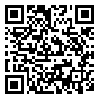Volume 3, Issue 2 (16 2004)
ijdld 2004, 3(2): 155-159 |
Back to browse issues page
Download citation:
BibTeX | RIS | EndNote | Medlars | ProCite | Reference Manager | RefWorks
Send citation to:



BibTeX | RIS | EndNote | Medlars | ProCite | Reference Manager | RefWorks
Send citation to:
Ghaeli P, Kamkar M Z, Mesbahi M, Dashti Khoydaki S, Shahsavand E, Sadeghi M. COMPARING THE EFFECTS OF 8- WEEK TREATMENT WITH FLUOXETIN AND IMIPRAMINE ON FASTING BLOOD GLUCOSE IN PATIENTS WITH MAJOR DEPRESSION DISORDER . ijdld 2004; 3 (2) :155-159
URL: http://ijdld.tums.ac.ir/article-1-441-en.html
URL: http://ijdld.tums.ac.ir/article-1-441-en.html
Padideh Ghaeli * 
 1, Mohammad Zaman Kamkar
1, Mohammad Zaman Kamkar 
 , Mojdeh Mesbahi
, Mojdeh Mesbahi 
 , Simin Dashti Khoydaki
, Simin Dashti Khoydaki 
 , Esmaeil Shahsavand
, Esmaeil Shahsavand 
 , Majid Sadeghi
, Majid Sadeghi 


 1, Mohammad Zaman Kamkar
1, Mohammad Zaman Kamkar 
 , Mojdeh Mesbahi
, Mojdeh Mesbahi 
 , Simin Dashti Khoydaki
, Simin Dashti Khoydaki 
 , Esmaeil Shahsavand
, Esmaeil Shahsavand 
 , Majid Sadeghi
, Majid Sadeghi 

Abstract: (27073 Views)
Background: Diabetic Neuropathy is the most common and troublesome complication of Diabetes Mellitus, leading to the greatest morbidity and mortality and resulting in a huge economic burden for diabetes care. Early diagnosis of distal symmetric sensorimotor polyneuropathy, a common complication of diabetes, may decrease morbidity by allowing potential therapeutic interventions.
Methods: In 68 diabetic patients after neuropathy screening by U.K and Michigan scores, Bilateral sural nerve conduction parameters as nerve conduction velocity, latency and amplitude were determined and analysed.
Results: 54.4% of patients had Rt sural abnormal response, 50% had abnormality in left side and 39.7% had bilateral abnormality. There was significant statistical correlation between Michigan physical score and electrophysiologic finding (P-value < 0.003) but no correlation with U.K score (P-value > 0.3). The most prevalent abnormal electrophysiologic finding was amplitude decrement of sural response.
Conclusion: Sural nerve response is one of the simplest and most sensitive peripheral sensory nerves for electrophysiologic study of diabetic neuropathy and its evaluation is recommended in all diabetic patients in spite of normal physical examination and history for detection of subclinical neuropathic cases. For increment of sensitivity, amplitude measurement of sensory response is highly recommended.
Methods: In 68 diabetic patients after neuropathy screening by U.K and Michigan scores, Bilateral sural nerve conduction parameters as nerve conduction velocity, latency and amplitude were determined and analysed.
Results: 54.4% of patients had Rt sural abnormal response, 50% had abnormality in left side and 39.7% had bilateral abnormality. There was significant statistical correlation between Michigan physical score and electrophysiologic finding (P-value < 0.003) but no correlation with U.K score (P-value > 0.3). The most prevalent abnormal electrophysiologic finding was amplitude decrement of sural response.
Conclusion: Sural nerve response is one of the simplest and most sensitive peripheral sensory nerves for electrophysiologic study of diabetic neuropathy and its evaluation is recommended in all diabetic patients in spite of normal physical examination and history for detection of subclinical neuropathic cases. For increment of sensitivity, amplitude measurement of sensory response is highly recommended.
| Rights and permissions | |
 |
This work is licensed under a Creative Commons Attribution-NonCommercial 4.0 International License. |



